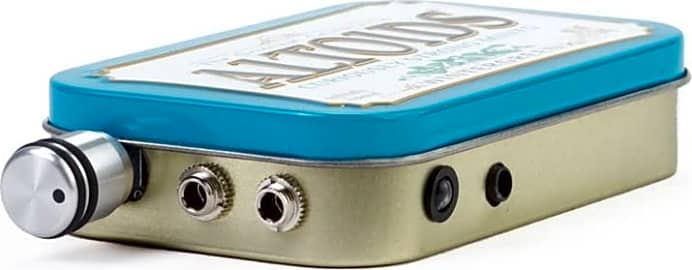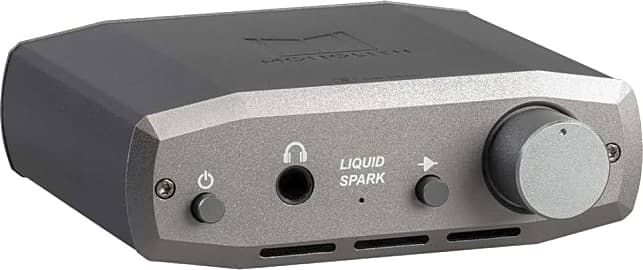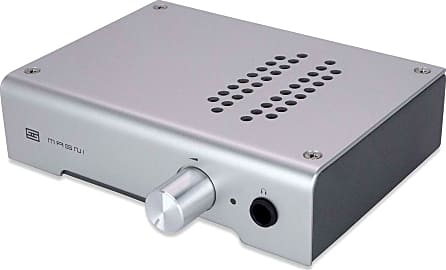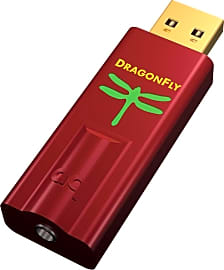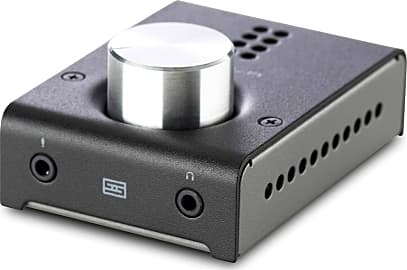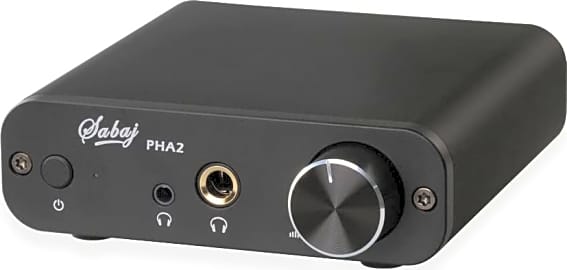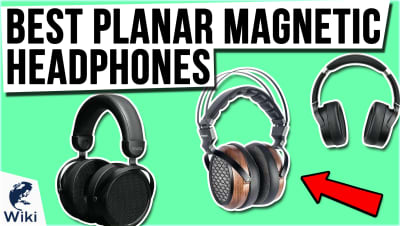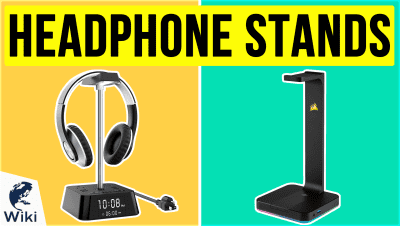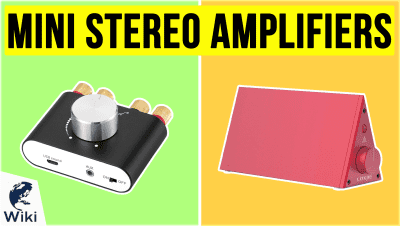The 10 Best Headphone Amplifiers

This wiki has been updated 42 times since it was first published in June of 2015. A crucial part of the audio reproduction process, amplification can mean the difference between a high-fidelity listening experience, and a distortion-filled headache. Whether your ears are covered by ultra-sleek, planar magnetic drivers, or you just want to get the most functionality out of everyday, closed-back cans, the right headphone amp can immerse you in a mesmerizing sea of sound. When users buy our independently chosen editorial choices, we may earn commissions to help fund the Wiki.
Editor's Notes
December 04, 2020:
We're not going to beat around the bush here: the vast majority of headphones users don't need to spend thousands, or even hundreds, to get an amplifier that meets or exceeds their needs. If you want to improve your phone or laptop's audio quality, eliminate the weak link in a home stereo system, or drive a new pair of premium cans, though, it can certainly be worth it to spend a little bit on a good amp.
If, for example, you want to bypass your PC motherboard's subpar onboard audio, the Schiit Fulla 3 is an excellent choice. This irreverent, California-based company makes some of the most well-known hi-fi equipment in the country, and that applies even more to the Schiit Magni 3. In fact, the Magni makes a great addition to an audiophile-grade stack, although it does not contain its own DAC. This can be a good thing, however, as the pickiest listeners often prefer to have the two components separate. The AudioQuest Dragonfly Red is another exceptional option for PC use. It's a mid-range option surrounded by the entry-level Black and high-end Cobalt, but the Red offers the best balance between price and performance.
For more complete, tabletop-style options, it's tough to beat the iFi Zen, which has the right variety of inputs and outputs for most users, as does the SMSL M500. Both of these should satisfy owners of all but the most premium headphones. For planar magnetic or other audiophile cans, the Monolith Liquid Spark is an impressively affordable choice with enough power output to drive just about anything on the planet.
Then there's the portable pocket amplifier, exemplified by the EarStudio ES100 and FiiO BTR5. These can be used with a PC via USB and can also turn high-end wired headphones into convenient yet also high-resolution ear speakers. We also want to make a special note of the JDS Labs cMoyBB, which is an interesting choice, built in a brand new Altoids tin, that has a significant following among audio aficionados. Don't be fooled by its appearance, though, as it's anything but a gimmick.
January 09, 2019:
Headphone amps differ significantly between portable, pocket-sized versions and those designed for in-home listening. For maximum Bluetooth functionality, the EarStudio is awfully tough to beat, particularly at such a low price. Another excellent budget-oriented option, the FiiO BTR3 is great for extending the life of non-wireless cans. If you're sitting down with a quality pair of open-backs, the Schiit Magni is widely considered the best option in their price range. FiiO's Q5 and the Chord Mojo both enable high-level formats such as Direct Sound Digital, and sound great at their mid-range prices. For top-of-the-line sound, the Conductor is an almost guaranteed success story, as is Sennheiser's own HDV 820, which unsurprisingly makes the perfect complement to their high-end headphones. The Dragonfly is the latest in a highly popular choice among smartphone-based audio enthusiasts, while the DarkVoice will pair very well with an advanced system hooked up to a record player.
Special Honors
Rupert Neve Designs RNHP Most of Mr. Neve's designs are meant specifically for professional studio use, and this three-way headphone amp is no exception. You'll need some seriously high-end cans to truly take advantage of it, but its reliability, simplicity, low noise floor, and high output make it one of the best choices around. rupertneve.com
Burson Audio If you want to make the most of your audiophile headphones, Burson is definitely worth a look - as long as you can afford the significant investment their products require. Both their Soloist and Conductor lines are renowned for output power and clarity, and can accommodate just about the most demanding headphones on the planet. bursonaudio.com
Chord Electronics Based in the United Kingdom, this company is very well-known for its audiophile-grade hardware. Its compact, headphone-centric amplifiers are equipped with some of the cleanest DACs you'll find, although such high-quality audio comes at a significant price. chordelectronics.co.uk
Do You Even Need A Headphone Amplifier?
Most of the headphone amplifiers that you are going to encounter in your search are solid state amplifiers.
A headphone amplifier takes the amplifier idea and condenses it. Headphone amplifiers vary in size from fitting in the palm of your hand to taking up the same amount of space as a portable DVD player.
If you listen to the majority of your music on your mobile devices, then you already know that they lack the power and capabilities to produce the intense sound you want. A headphone amplifier will add the necessary power to turn your average headphones into high quality speakers. Most mobile devices already have an amplifier built into the system. But these are rarely sufficient to produce the level of sound a dedicated audiophile wants.
The headphone amplifiers on the market today are compatible with most mobile devices, laptops, and desktop computers. Some are specifically designed to be used with mobile devices while others work better with computers and their specific audio equipment. The higher-end amplifiers can accommodate up to four sets of headphones. You will also find that some of these amplifiers come with USB ports that are helpful for streaming and file transfers. A huge advantage to using a headphone amplifier is that it allows for precise adjustments so you can customize your audio experience.
Most of the headphone amplifiers that you are going to encounter in your search are solid state amplifiers. These amps come complete with a digital to analog converter and reproduce music with accuracy.
How To Buy A Headphone Amplifier
The simplest reason for purchasing a headphone amplifier is to produce a higher quality sound than what you would have otherwise. Most average headphones on the market are not designed with the best quality sound in mind and will not help you to fully enjoy the intricacies of your audio files. A headphone amplifier is going to improve your sound while taking the pressure off of your sound system.
Don’t worry - these are usually small enough to transport from place to place if necessary.
While you are going to run into many types of headphone amplifiers, choosing the right one is usually as simple as considering your needs and how you plan to use it. If you are hitting the gym, you might just need to get a decent set of headphones. If you want an all-around, portable experience while on frequent flights and business trips, a portable amp is a safe bet. If you frequently work on studio recordings or are adamant about high-quality sound at all times no matter if you are using a mobile device or your laptop, consider an amp that sits on your desktop.
Here are a few additional factors to consider if you are in the market for a headphone amplifier.
Find out your headphone impedance. This is generally indicated by an ohm symbol on the product packaging or description. If the impedance is below 100, you might not need to worry about an amplifier, although it can still enhance the audio experience. Low impedance headphones are specifically designed for low power devices such as MP3 players. If it is above 100, start shopping for that amplifier because high impedance headphones need more power to produce a quality sound.
Consider your headphone sensitivity. Let’s face it: some headphones just don’t get loud enough. Or they get loud, but the sound quality drops dramatically when the volume is boosted. If your headphones sensitivity is shown to be under 100DB (decibels) at 1mw (Milliwat) of power, you probably need a headphone amplifier to reach the volume level and sound quality that you want.
Once you have established that you are going to buy a headphone amplifier, consider the type you want. Do you want a portable amp or one that will spend most of its time on your desktop? If you spend a lot of time at home or in the studio, you need a desktop amplifier. Don’t worry - these are usually small enough to transport from place to place if necessary. However, if you find yourself on the go a lot, go ahead and invest in the portable amp. It can still function as a desktop amplifier when necessary, but you can leave your desk whenever you need to without having to worry about unplugging a bunch of cords.
A Brief History of the Headphone Amplifier
The invention of the amplifier dates back as far as Thomas Edison. While it was not his intention, he inadvertently discovered an electrical current that could be used to transfer radio waves and produce sound. While he did not continue the work to bring this invention to fruition, others such as British physicist Joseph John Thomson and British scientist John Ambrose Fleming built on his work and created an “oscillation valve” that made this possible.
John C. Koss, a popular Jazz musician, invented stereo headphones in the late 1950s that gained instant popularity with music lovers and musicians.
Not long after, American scientist Lee de Forest added an element to the tube Fleming created and made a direct-current grid that he dubbed the “Audion.” Edwin Howard Armstrong linked two circuits between a stronger and weaker current ultimately creating the Amplifier.
The first headphones were marketed to the public in the 1930s. Beyerdynamic claims the world’s “first dynamic headphones” that were sold in 1937. This company’s headphones are still widely used by video and sound professionals today. John C. Koss, a popular Jazz musician, invented stereo headphones in the late 1950s that gained instant popularity with music lovers and musicians.
In 1998, Bluetooth technology hit the scene and revolutionized the way people listen to music. The increased use of mobile devices and electronics in the production and enjoyment of video and audio files has made things like headphone amplifiers a regular staple in the world of musicians, producers, audiophiles, and average music lovers alike.




